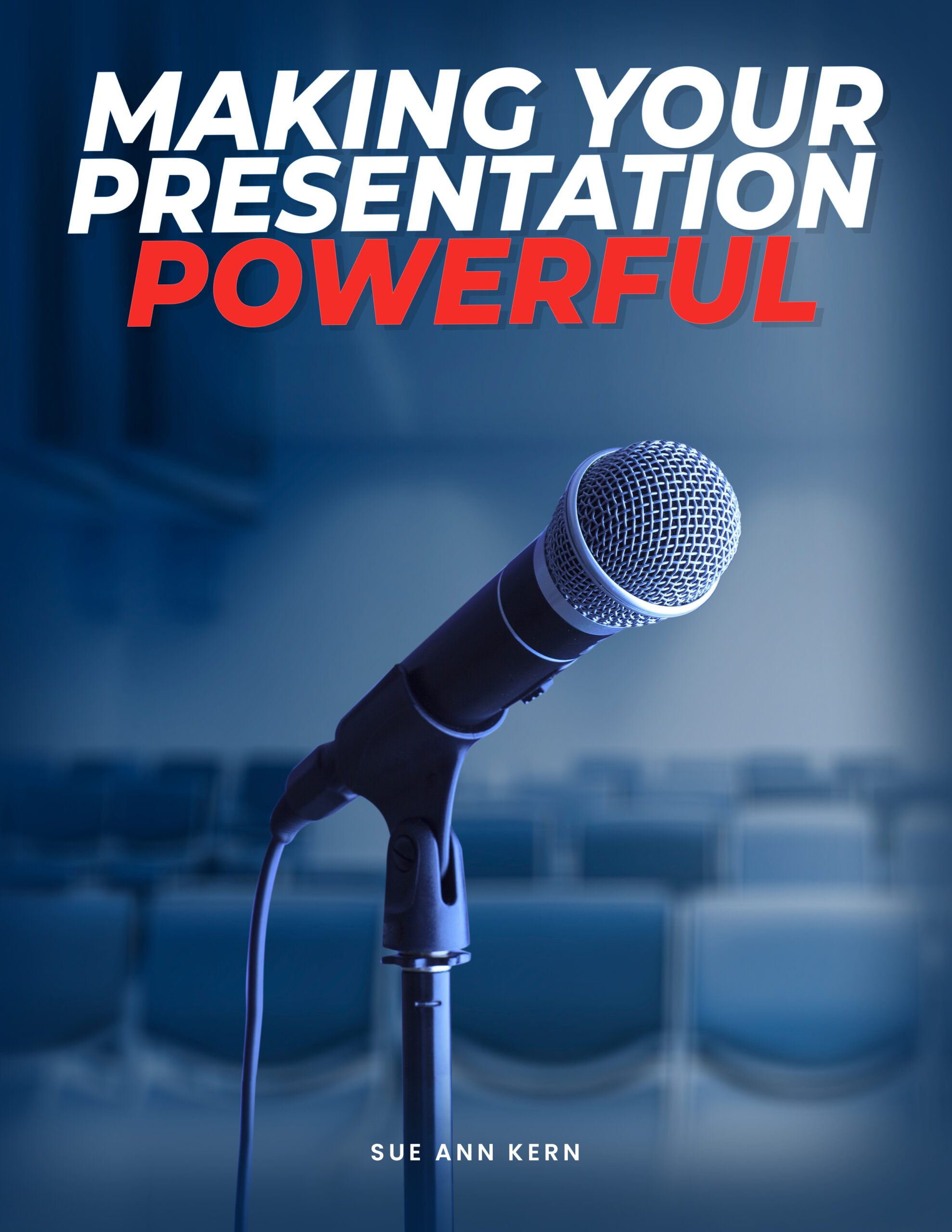We’ve all experienced it: that dreadfully boring speaker who is either monotonically reading notes or dryly delivering a painfully memorized script. No matter how important the information or the speaker delivering it, this can be excruciating for the audience. Maybe there is too much information to take in. Maybe there was an interesting point that was made but was quickly passed over with another interesting point. Maybe the speaker has stage fright. Definitely, the speaker is not a good communicator.

On the contrary, how many times have you listened to someone talk about a relatively boring subject, such as a financial or technical presentation, and found yourself mesmerized, intrigued, even entertained? You leave the presentation remembering important points and actually are inspired to take action. You have just experienced public speaking at its best.
Let’s talk about ways to make your message, no matter how pedantic, more memorable and engaging. Four tools to help grab your audience’s attention are through 1) Storytelling, 2) List of Important points, 3) Humor, and 4) Effective use of Pauses.
1) Storytelling: The most effective way to help your audience to understand an important point is to give an example and tell a personal story. People can relate to you better when you share personal stories. Maybe they have also been afraid to skydive. Maybe they have also swum with sharks. They can relate. If you want to talk about the best way to make Baked Alaska, tell a story about that time when you totally botched it and it morphed into something resembling soggy milk toast. If you want to inspire your audience to take up meditation, tell a story about how you felt the first time you realized how your practice helped you calmly deal with a difficult situation.
2) List Important Points: How many important points are you trying to make in your presentation? Be careful not to overload your audience with too many things to remember, i.e. Fifteen Things to Consider When Buying A Stand-Up Paddleboard. Who will remember 15 points? Keep it simple and include no more than five bullet points. Five points are substantial, but not overwhelming. This means you may have to combine your points to consolidate down to five.
Don’t have five? Or four? Or even three? You should work on coming up with at least three important points that you want your audience to remember. Two is too few. One makes the audience feel that you’ve oversimplified things and they’ve wasted their time. Three is the magic number. Have you heard of the “Rule of 3s”? This “rule” is a guideline to allow a simple, succinct and concise pattern to help your audience remember the information you are delivering.
3) Humor: A great way to engage your audience and get their attention is to add a little laughter to your speech. You don’t have to do a stand-up routine, but even the driest subject material can be made more interesting if you can make the crowd chuckle. I’ve even heard eulogies that have added a little humor to lighten up a somber mood. With that said, you must be sure your joke is fitting to the occasion, the subject matter, and will not be offensive to your audience. Likewise, your jokes shouldn’t take away from the purpose, the context, or the information being delivered.
Using humor in your speech will help to put your audience at ease and make you more likable and relatable. It helps to develop a bit of camaraderie. However, do not make fun of other people or make your audience laugh at the expense of others. An easy way to get your audience to relate to you through humor is through a bit of self-deprecation. Tell a story about how you messed up something or had an embarrassing moment. People can relate to that because we all mess up and have embarrassing moments!
If you are giving a technical speech, adding humor can be tricky. It can be tough to find something funny to say about financials, legal documents, or blueprints. You also want to be careful that your humor doesn’t undermine your credibility. During one of our Critical Design Reviews when I was a digital design engineer, my boss was discussing the design we were proposing, the circuitry, and the development of the proprietary components. It could have been quite boring. Before he showed the image for the product, he made an additional slide that simply said, “…and now the miracle occurs,” complete with lightning bolts. It really got a laugh from the audience!
Be confident that you can deliver a humorous story or joke well. It is critical to get the wording and the timing right. If the punchline misses the punch, the results can be disastrous.
4) Effective Use of Pauses: We’ve all been advised to avoid using the deadly um’s, and’s, so’s, and the like. I cringe when I hear professional speakers rely on these filler words and instantly lose a bit of respect. Using filler words is often involuntary, and being self-aware takes practice. Pay attention to other speakers and recognize how you react when they use an abundance of filler words. When you rehearse your speech, consider recording it, and then try to note when you use filler words. If you have someone help you rehearse, have them take notes or even ring a bell when they catch you.
It is better to be quiet than use filler words. The brief pause that will occur will seem much longer to you than it will to the audience.
Pauses are effective in many ways. They help add emphasis, so use a pause when you are trying to make an important point. Say your point and then be silent for a few seconds. People will notice and will look at you with renewed attention. The extra few seconds will allow the important point to settle in.
Pauses are also helpful to transition between sections of your speech or topics. It signals to the audience that you are about to say something new and helps them to connect your last point to the new one.
By using these four tools: 1) Story Telling, 2) List of Important points, 3) Humor, 4) Effective Use of Pauses, you are sure to make your presentation more memorable and conversational, and your audience will be more interested and engaged.
